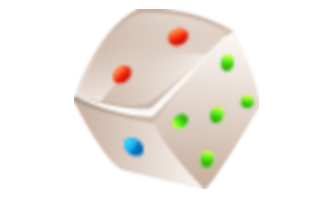Chemical reactions
Physical Science - Middle School
Chemical Reactions
Multimedia Lesson

Elements and the Periodic Table
Multimedia Lesson

Chemical Reactions
Presentation

Balancing Equations
Presentation

Reactions and Reaction Rates
Presentation

Energy in Reactions
Presentation

Evidence of Chemical Reactions
Virtual Lab

Chemical and Physical Changes
Interactive

Types of Reactions
Interactive

Acid-Base Solutions
Interactive

Balancing Chemical Equations
Interactive

Concentration
Interactive

Molarity
Interactive

pH Scale
Interactive

pH Scale: Basics
Interactive

Reactants, Products and Leftovers
Interactive

Chemical reactions
Study Guide

Chemical Reactions
Quiz

Chemical reactions
Quiz

Chemical Reactions
Flash Cards

Chemical reactions
Flash Cards

Chemical Reactions
Worksheet

Chemical reactions
Worksheet

Chemical Reactions
Game

Chemical reactions
Game

Chemical Reactions
Vocabulary List

Chemical reactions
Vocabulary List

The Animal Kingdom
Flip Chart

The Animal Kingdom
Flip Chart

Introduction to Animals
Flip Chart

Introduction to Animals
Flip Chart

Introduction to Animals
Flip Chart

Chemical Reactions
Flip Chart

Chemical Reactions
Flip Chart

Changes of Matter
Flip Chart

Chemical Reactions
Flip Chart

Formulas and Equations
Flip Chart

Balancing Equations
Flip Chart

Types of Chemical Reactions (1)
Flip Chart

Types of Chemical Reactions (2)
Flip Chart

Energy in Chemical Reactions
Flip Chart

Exothermic and Endothermic Reactions
Flip Chart

Chemical Reaction Rates and Catalysts
Flip Chart

Chemical Reactions Vocabulary Review
Flip Chart

Study Guide Chemical reactions
❮
1
/
3
❯
CHEMICAL REACTIONS Reactants and Products When a chemical reaction occurs, the original substances put together, called reactants, lose their chemical properties and become different substances called products with a different set of chemical properties. Look at the example below: H2 + O2 H20 Reactants product In this example, an explosive gas, Hydrogen, combines with a gas that supports combustion, Oxygen, to make a substance that puts out fires, water. Lesson Checkpoint: What is a reactant? Energy in Reactions There are two types of evidence to show that a chemical reaction occurs. • The first is the simple fact that the products of the reaction have different chemical properties than the reactants. The fact that Hydrogen and Oxygen combine to make water is a clear example of this. • The second type of evidence has to do with energy. In some cases energy has to be absorbed in order for the reaction to occur and in other reactions, energy is released. When energy is absorbed, it is called an endothermic reaction. • Reactions where energy is released are called exothermic reactions. An example of an exothermic reaction would be a rocket taking off. The burning of fuel provides the heat which causes the rocket to lift off. Lesson Checkpoint: What is the difference between an endothermic and an exothermic chemical reaction? © Copyright NewPath Learning. All Rights Reserved. Permission is granted for the purchaser to print copies for non-commercial educational purposes only. Visit us at www.NewPathLearning.com.
Types of Chemical Reactions There are four types of chemical reactions: • In a synthesis reaction, two elements combine to make a compound. See the example below. • In a decomposition reaction, a compound is broken down into simpler substances. In the example above, the reactant, hydrogen peroxide, is broken down into water and oxygen. • In a single replacement reaction, an element takes the place of another element in a compound. See the example below. In this example, the element Fluorine has taken the place of Chlorine in the original compound • In a double replacement reaction, elements in one compound exchange positions with elements in the other compound. See the example below. In this example Sodium(Na) has taken the place of H and H has taken the place of Na. Lesson Checkpoint: In which type of chemical reaction does one element take the place of another element? © Copyright NewPath Learning. All Rights Reserved. Permission is granted for the purchaser to print copies for non-commercial educational purposes only. Visit us at www.NewPathLearning.com.
Mass Remains Constant According to the law of conservation of mass, mass can not either be destroyed or created in a chemical reaction. This means that the total mass of each element does not change during the reaction. See the example below. H2 + 02----H20 If you count the atoms of each element, you will notice that there are more oxygen atoms on the left side than on the right side. To correctly write this reaction we need to use a coefficient or number placed in front of the chemical formula. The reaction below has been balanced with the use of coefficients. In this balanced reaction, there are four atoms of Hydrogen on each side of side of the reaction and two atoms of Oxygen on each side of the reaction. All chemical reactions need to be balanced to properly represent how the reaction actually occurs. Lesson Checkpoint: What is the Law of Conservation of Mass? Affecting Reaction Rate Some reactions require an initial burst of energy to get the reaction going. This is called activation energy. The outcome of a reaction using activation energy could still be endothermic or exothermic. Once a chemical reaction gets going there are several factors that control the rate at which the reaction occurs. • Increasing the surface area of the reactants or increasing the temperature usually speeds up a reaction. • Another way to speed up a reaction is by increasing the concentration or amount of reactants. • Still another way to move the reaction along is to use a catalyst or enzyme. These are substances added to the reaction just to speed it up but they are not involved like the reactants. An enzyme brings reactants into contact to speed up the reaction. The enzyme does not change. Lesson Checkpoint: Name two steps you can take to speed up a chemical reaction. © Copyright NewPath Learning. All Rights Reserved. Permission is granted for the purchaser to print copies for non-commercial educational purposes only. Visit us at www.NewPathLearning.com.
Table Of Contents: Chemical Reactions
1. Chemical Reactions
2.1. Chemical and Physical Changes of Matter
A physical change involves a change of state or form of a substance while its chemical properties remain the same. Examples of physical changes include crumpling a piece of paper, melting an ice cube, and breaking a glass bottle. Changes in physical properties do not produce new substances and are only concerned with energy and states of matter. On the other hand, a chemical change takes place at the molecular level and occurs when one or more substances are changed into new substances with different properties. Examples of chemical changes include burning a piece of paper into ashes, cooking an egg, rusting of iron, and mixing an acid with a base to produce water and salt.
2.2. Chemical Reactions
Chemical reactions occur every day all around you, and even within you. Chemical reactions occur in plants during photosynthesis and in the engines of automobiles. A chemical reaction is a series of chemical changes in which one or more substances are converted to one or more different substances. Substances are either chemical elements or compounds. An original substance that is involved in a chemical reaction is called a reactant, while the substance(s) produced is called a product. The electron configuration of atoms plays an important role in how elements interact with each other and form chemical bonds. The ease with which an atom will form chemical bonds determines its ability to undergo chemical reactions.
2.3. Evidence of Chemical Reactions
During a chemical reaction, atoms can combine to form molecules, molecules can break apart to form atoms, or molecules can react with other molecules to form new substances. Chemists look for specific evidence to determine if a chemical reaction has taken place. This evidence can include the formation of gas, color change, formation of a precipitate, change in temperature, or the emission of light. If one or more of these changes are observed and a new substance has formed, then a chemical reaction has occurred.
2.4. Chemical Bonds
A chemical bond is an attraction between atoms that holds them together in a molecule. During a chemical reaction, new substances are produced as the original bonds of the reactants are broken. Atoms are then rearranged and new bonds are formed between the atoms of the products. For example, what happens when hydrogen and chlorine molecules are combined? The bonds that hold the chlorine and hydrogen atoms together break, and then a new bond is formed between the chlorine and hydrogen atoms.
2.5. Chemical Formulas
Chemical formulas are a shorthand way to represent the types of atoms and their numbers in an element or a compound. The atoms of each element are represented by one or two letters. When more than one atom of a specific element is found in a molecule, a subscript is used to indicate this in the chemical formula. For example, the chemical formula for water, H₂O, represents that two atoms of hydrogen have joined together with one atom of oxygen to form a molecule of water.
2.6. Chemical Equations
A chemical reaction can be expressed as a chemical equation. A chemical equation is a statement of a chemical change using symbols. Consider the reaction between carbon and oxygen gas to form carbon dioxide. The starting substances, known as reactants, are carbon and oxygen gas. The final substance formed, known as a product, is carbon dioxide. To write the chemical equation for a reaction, first you write the symbols for the reactants, then an arrow, followed by the symbols for the products. The “plus” (+) sign separates the reactants or products from one another. The arrow indicates the direction of the reaction or “to yield.”
2. Pause and Interact
3.1. Review
Use the whiteboard text tool to complete the graphic organizer.
3.2. Chemical and Physical Changes
Select the best answer(s) and then click on the check button.
3. Balancing Equations
4.1. Conservation of Mass
In any chemical reaction, atoms are never lost or gained, they are only rearranged. All atoms of the reactants are converted to atoms of the products, which is the reason chemical equations are balanced. The Law of Conservation of Mass states that the mass of the reactants must equal the mass of the products. To find the mass of a molecule, add the atomic masses of each element. For example, in the equation, C + O₂ -> CO₂, the mass of the reactants is 12 + 2 x 16 which equals 44 amu. The mass of CO₂ is also 44 amu. Therefore, the mass of the reactants equals the mass of the products so the equation is balanced.
4.2. Balancing Chemical Equations
To balance a chemical equation, you apply the Law of Conservation of Mass to get the same number of atoms of every element on each side of the equation. The first step in balancing an equation is to make a list of how many atoms of each element are on each side of the equation. The coefficients are in front of the molecules that tell you how many of each molecule there are. Balance the atoms one at a time by changing the coefficients in front of each formula until you have an equal number of each type of atom on both sides of the equation. Never change the subscripts. The coefficient times the subscript gives the total number of atoms. It is usually easier to first balance the atoms that occur in one substance on each side of the equation. Then balance the atoms that occur in compounds, before attempting to balance atoms that occur in elemental form such as H₂, O₂or Cl₂. And finally, be sure that all the coefficients are in the smallest possible whole number ratio.
4.3. Example of Balancing a Chemical Equation
Let’s balance the equation, N₂+H₂ -> NH₃. There are two atoms of nitrogen and hydrogen on the left side and one nitrogen atom and three hydrogen atoms on the right side. First balance the atoms in the compound, NH₃. Place a 2 in front of NH₃ which now makes it 2 atoms of N and 6 atoms of H on the right side of the equation. This balances the N atoms on each side of the equation but not the H. By placing a 3 in front of the H atom on the left side, it increases the H atoms on the left side of the equation to 6, which makes it equal to the number of H atoms on the right side. The equation is now balanced. It tells us that 1 molecule of nitrogen combines with 3 molecules of hydrogen to produce 2 molecules of ammonia.
4. Pause and Interact
5.1. Review
Use the whiteboard text tools and the information provided to find the mass of the reactants and the mass of the products in each question. Is each equation balanced?
5. Reactions and Reaction Rates
6.1. Types of Chemical Reactions
Due to the overwhelming number of chemical reactions it’s helpful to classify them. Chemical reactions can be classified by the type of chemical change that takes place. Most chemical reactions fall into one of five categories: synthesis (combination), decomposition, single replacement (substitution), double replacement, and combustion. Each type of chemical reaction has a specific pattern of how reactants become products.
6.2. Synthesis Reactions
In a synthesis reaction, two or more elements or compounds combine to form a single product. This type of reaction is represented by the following general equation. A + B -> AB, a single substance as the product is the key characteristic of a synthesis reaction. One example of this kind of reaction is the formation of sodium chloride, or table salt, by the combination of sodium metal and chlorine gas. Another example of a synthesis reaction is the formation of water via the fusion of hydrogen gas and oxygen gas.
6.3. Decomposition Reactions
In a decomposition reaction, a single reactant, a compound, breaks down into two or more parts. This type of reaction is represented by the general equation AB -> A+B. There is one substance as a reactant and more than one substance as the product. This is the key characteristic of a decomposition reaction. One example of a decomposition reaction is the electrolysis of water (passing an electrical current through water) which forms hydrogen gas and oxygen gas.
6.4. Single-Replacement Reactions
In a single replacement-reaction, also called single-displacement, a more active element replaces a less active element in a compound. Such a reaction is represented by the general equation A+BC -> AC+B. For example, in the reaction, Fe+CuSO₄ -> FeSO₄+Cu, iron which is more reactive than copper, replaces the copper in copper sulfate and forms iron sulfate. Metal plating is a process that uses a single-replacement reaction to coat one metal with another. An iron nail placed in a copper sulfate solution will be coated with copper.
6.5. Double-Replacement Reactions
In a double-replacement reaction (also known as double-displacement reaction) the ions of two compounds exchange places in an aqueous solution (dissolved in water) to form two new compounds. One of the resulting products from such a reaction is often a gas, a precipitate (solid), or water. A double-replacement reaction is represented by the general equation AB+CD -> AD+CB. The reaction needed to make a cake rise begins with a double replacement reaction. Baking soda and the acidic ingredients in cake batter exchange ions producing carbonic acid. This acid then decomposes into carbon dioxide gas and water. The carbon dioxide gas makes the cake rise.
6.6. Combustion Reactions
In a combustion reaction, a compound and oxygen react to produce a new product and heat. Flame is the most recognizable form of a combustion reaction, while an explosion is a faster form of the reaction. Many of the reactants in a combustion reaction contain mostly carbon and hydrogen atoms which react with oxygen to produce heat, CO2 and H2O. Common examples of combustion reactions include the burning of wood or fuel, and the combustion of food nutrients that power our bodies. The following balanced equation represents the combustion of natural gas (methane) used to heat many homes: CH₄(g)+2O₂(g) -> CO₂(g)+2H₂O(g)+energy.
6. Pause and Interact
7.1. Review
7.2. Types of Reactions
Select the best answer(s) and then click on the check button.
7. Energy in Reactions
8.1. Collision Theory
All molecules possess a certain minimum amount of energy. The energy can be in the form of kinetic energy and/or potential energy. In order for a reaction to occur, particles must collide at exactly the right angle with the proper amount of energy. When two particles collide, the kinetic energy of their motion is converted to potential energy. The energy conversion can be represented by a spring between two particles. As the particles move closer together, the spring is compressed. The speed of the particles decreases and the kinetic energy of motion is changed to stored, or potential energy in the spring. If the potential energy is great enough, a reaction will occur. The minimum energy to cause a chemical reaction is called the activation energy.
8.2. Activation Energy
All reactions have a minimum energy, called the activation energy, which is necessary for a chemical reaction to occur. The activation energy is used to break the bonds between the atoms or molecules of the reactants. For a chemical reaction to take place, there must be an adequate number of molecules with energy equal to, or greater than, the activation energy. The amount of activation energy required to start a reaction is often called the energy barrier. The addition of heat or an appropriate enzyme, a catalyst, are two factors that can activate molecules to overcome the energy barrier. The activation energy barrier prevents most reactions from taking place spontaneously. This is particularly important for biological processes, which ensure a stable environment for all living things.
8.3. Exothermic Reactions
A chemical reaction that releases energy is called exothermic. In such reactions, some of the energy released from breaking the bonds of the reactants will be released into the surroundings. Because energy is released in an exothermic reaction, the products have a lower energy content than the reactants. The energy that is released can be in the form of heat, electricity and light. For example, in a chemical hot pack the reaction between calcium chloride and water releases heat. The chemical reactions in a battery release electrical energy. And the exothermic reaction in a glow stick releases light.
8.4. Endothermic Reactions
If energy must be added to reactants in order for the reaction to take place, the reaction is endothermic. In an endothermic reaction, energy is absorbed from the surroundings and therefore the products have higher energy content than the reactants. The energy that is absorbed can be in the form of light or heat. Photosynthesis is an example of an endothermic chemical reaction. During this process, plants use energy captured from the Sun to convert carbon dioxide and water into glucose and oxygen. A cold pack also uses an endothermic reaction. Ammonium nitrate and water absorb heat from the environment and cool off their surroundings.
8.5. Energy in Reactions
A graph of energy versus reaction progress is often used to show the energy relationships in a reaction. The energy of the reactants increases due to the collisions of the particles. This is shown by the rising curve where the maximum point is the activation energy. The curve then decreases until the energy of the products is reached. When the energy of the reactants is greater than the energy of the products, the reaction is exothermic. When the energy of the reactants is less than the energy of the products, the reaction is endothermic.
8.6. Reaction Rates
Reaction rates are affected by temperature, concentration, and surface area. As the temperature of a substance increases, the kinetic energy increases. At higher temperatures, more collisions have the necessary energy to occur, so the reaction rate increases. The concentration of a substance is the amount of that substance in a given amount of a solvent, such as water. A higher concentration means more collisions. If the probability of a favorable collision increases, so does the reaction rate. Increasing the surface area of solid reactants exposes more reactant particles to each other, which in turn increases the rate of reaction. Conversely, lowering the temperature, concentration, or surface area will slow down a chemical reaction.
8.7. Catalysts
Catalysts play an important part in many chemical processes. A catalyst is a substance that speeds up the rate of a chemical reaction by lowering its activation energy. A catalyst does not get permanently changed and does not get used up in the reaction. Catalysts are important in many industrial chemical applications, as well as in biochemical reactions. In biological systems, the most common catalysts are protein molecules, called enzymes. Enzymes act as catalysts in virtually all chemical reactions within cells.
8. Vocabulary Review
9.1. Chemical Reactions Vocabulary Matching Review
9. Virtual Investigation
10.1. Evidence of Chemical Reactions
What evidence can be observed during a chemical reaction? When a chemical reaction occurs, an observable change can often be seen during the progress of the reaction. Once the reaction is complete, a new substance or substances will be formed. The new substances will have different properties than the original substances. In this virtual investigation you will combine two substances and make observations before, during, and after any reaction. Not all substances will react, but there will be some observable evidence for any reaction that takes place. Of the chemical reactions that occur, you will see the different types of reactions: synthesis, decomposition, single replacement, and double replacement.
